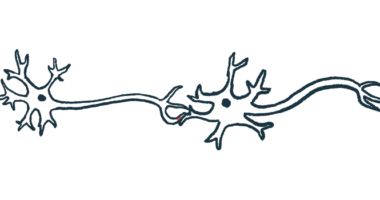Newly found Huntington’s disease mechanism is ‘one piece of puzzle’
Scientists say discovery aids in molecular understanding of cellular function

Excessive CAG repeats, the genetic defect that causes Huntington’s disease, lead to processing errors and the production of unexpected proteins that form clumps and promote nerve cell death, a new study found.
This discovery, according to the researchers, sheds new light on the abnormal toxic protein production seen in the neurodegenerative disease.
“There’s an array of mechanisms that come together and contribute to cell death in Huntington’s,” Ankur Jain, PhD, the study’s senior author at the Whitehead Institute for Biomedical Research, in Massachusetts, said in an institute press release.
“This is one piece of the puzzle that contributes to our molecular understanding of how these repeats distort cellular functions,” Jain said.
Details of the discovery can be found in “CAG repeat expansions create splicing acceptor sites and produce aberrant repeat-containing RNAs,” a study published in the journal Molecular Cell.
Investigating CAG repeats in Huntington’s
Huntington’s disease is caused by excessive repeats of C, A, and G, three nucleotides — the building blocks of DNA — in the HTT gene. This genetic defect is known as a CAG repeat expansion, and people with 36 or more CAG repeats develop the condition, with longer stretches of repeats leading to earlier disease onset.
In Huntington’s, excessive CAG repeats drive the production of a longer than usual huntingtin protein with a region called polyQ, which makes it prone to forming toxic clumps that harm nerve cells.
But other abnormalities associated with CAG repeats also may occur within the process of translating genetic information into proteins. The information in a gene is copied into messenger RNA, known as mRNA. This molecule contains segments called exons that code for proteins along with segments called introns that do not.
In a natural process referred to as splicing, introns are removed and exons are stitched together. This creates a mature mRNA molecule that is then used to make a protein. And much like in a recipe, adding or skipping certain exons in this mRNA molecule can change the final protein.
Previous studies had indicated that CAG repeats can result in mRNA molecules that form toxic clumps called RNA foci in the cell’s nuclei — where all genetic information is stored — and interfere with splicing events.
In addition, CAG repeat-containing mRNAs can move outside the nucleus and be transformed into proteins without the need of a typical start sequence, called an AUG start codon. This process, known as repeat-associated non-AUG (RAN) translation, may lead to the production of unneeded proteins that form toxic clumps.
However, the molecular mechanism of RAN translation is not entirely clear in Huntington’s and other diseases caused by CAG repeat expansion.
“The question of why the brains of patients with repeat expansion disorders have spurious proteins has confounded scientists for some time,” Jain said.
Findings provide new tools for researching Huntington’s disease mechanisms
To learn more, the team set out to identify the features of mRNA building blocks immediately adjacent to the CAG repeats that determined whether a molecule formed RNA foci or underwent RAN translation.
The scientists hypothesized that excessive CAG repeats could themselves provide new splicing sites and lead to the production of abnormal repeat-containing mRNAs.
To clarify this, they created a small library of molecules that contained 240 CAG repeats attached to various sequences of DNA. About half of the RNA molecules produced remained in the nucleus as RNA foci, while others moved out of the nucleus, underwent RAN translation, and formed toxic protein aggregates, or clumps.
The team then developed a new tool called SATCfinder that can assess the extent of splicing of the repeat sequence. They used sequences of HTT and other genes associated with CAG repeat expansion diseases.
“We decided to approach the mapping of repeats differently,” said Rachel Anderson, the study’s first author and a graduate student at Whitehead.
Experiments confirmed that excessive CAG repeats acted as new mRNA splice acceptor sites, the segment at the end of an intron that is almost always an AG nucleotide sequence. With new AG acceptor sites created by CAG repeats, the normal mRNA splicing was altered.
Also, the frequency of altered splicing events increased with longer CAG repeats.
Further results showed that, depending on the sequences adjacent to the CAG repeats, many repeats may become embedded in mRNA molecules with AUG start codons, and therefore the potential to produce proteins.
This may lead to the movement of these mRNA molecules outside the nucleus and the production of unexpected proteins that mis-fold and clump together, the team noted.
Finding a ‘molecular explanation’
Lastly, changing sequences next to CAG repeats to disrupt these alternative splicing events was sufficient to prevent RAN translation and protein clumping.
“Our findings provide a molecular explanation for the abnormal [protein] products observed in CAG trinucleotide repeat expansion disorders and add to the repertoire of mechanisms by which repeat expansion mutations disrupt cellular functions,” the researchers wrote.
These findings will give the team new tools to use in researching Huntington’s disease mechanisms, according to Jain.
“Now, because we have an understanding of the molecular mechanism, we can try to target the splicing pathway and diminish the production of these proteins,” Jain said.
The scientists now are focused on investigating how CAG repeats promote splicing errors and knowing more about the real contribution of these errors to Huntington’s and other CAG repeat expansion diseases.









